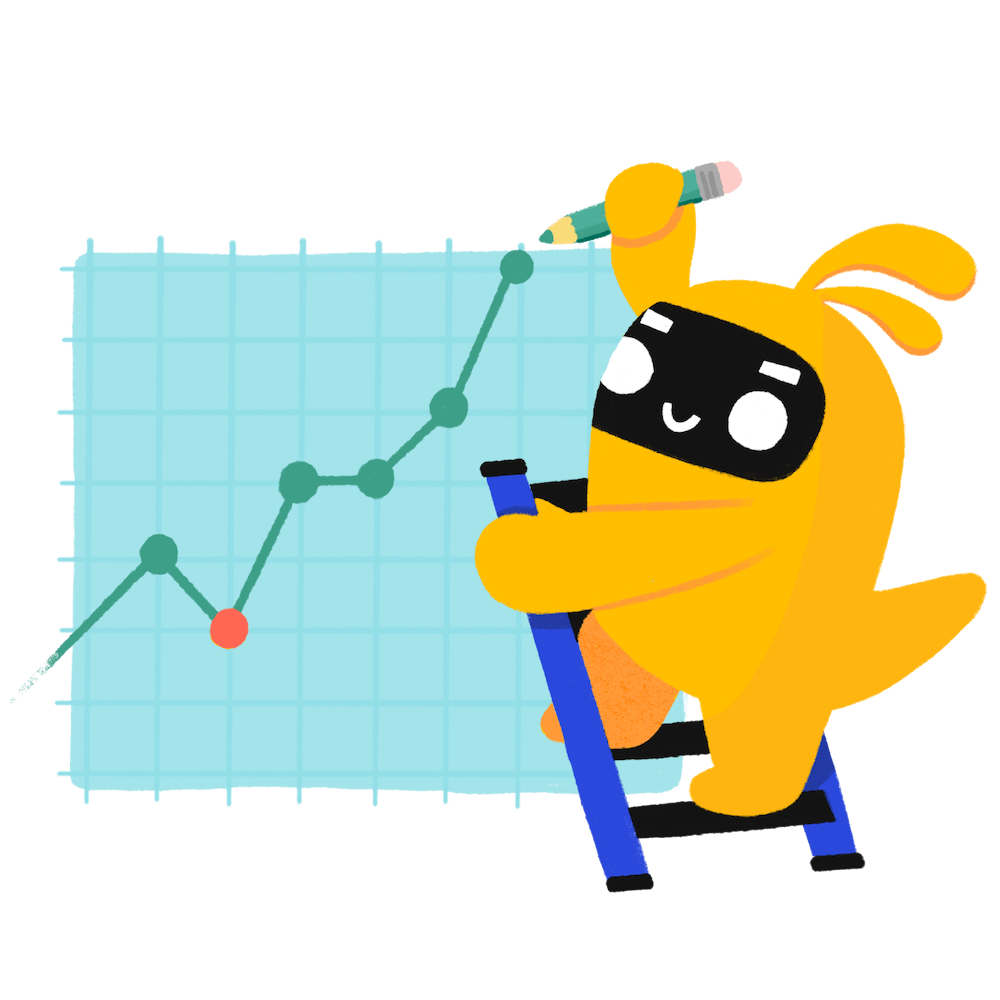2 customisable OKR examples for Financial Statement Productivity
What are Financial Statement Productivity OKRs?
The Objective and Key Results (OKR) framework is a simple goal-setting methodology that was introduced at Intel by Andy Grove in the 70s. It became popular after John Doerr introduced it to Google in the 90s, and it's now used by teams of all sizes to set and track ambitious goals at scale.
Crafting effective OKRs can be challenging, particularly for beginners. Emphasizing outcomes rather than projects should be the core of your planning.
We've tailored a list of OKRs examples for Financial Statement Productivity to help you. You can look at any of the templates below to get some inspiration for your own goals.
If you want to learn more about the framework, you can read our OKR guide online.
Building your own Financial Statement Productivity OKRs with AI
While we have some examples available, it's likely that you'll have specific scenarios that aren't covered here. You can use our free AI generator below or our more complete goal-setting system to generate your own OKRs.
Feel free to explore our tools:
- Use our free OKR generator
- Use Tability, a complete platform to set and track OKRs and initiatives, including a GPT-4 powered goal generator
Our customisable Financial Statement Productivity OKRs examples
You will find in the next section many different Financial Statement Productivity Objectives and Key Results. We've included strategic initiatives in our templates to give you a better idea of the different between the key results (how we measure progress), and the initiatives (what we do to achieve the results).
Hope you'll find this helpful!
1. OKRs to achieve 100% productivity in financial statement preparation
Achieve 100% productivity in financial statement preparation
Increase financial statement preparation speed by 20% without errors
Implement automated accounting software for faster data processing
Streamline and simplify the financial reporting process
Conduct regular training on accurate and quick data entry
Implement an effective workflow to process all financial reports within schedule
Implement regular check-ins to monitor progress
Establish clear deadlines for all financial report processes
Assign specific tasks to designated team members
Attain absolute accuracy in 95% of prepared financial statements, as assessed by audits
Establish comprehensive training for finance team
Implement strict quality control in financial reporting
Conduct regular internal audits for immediate correction
2. OKRs to to Increase productivity in financial statement preparation process
To Increase productivity in financial statement preparation process
Streamline communication process to decrease feedback acquisition from 10 days to 5 days
Implement a unified communication platform for quicker feedback receipt
Establish regular short stand-up meetings for rapid updates
Set clear expectations about response times with team members
Reduce time taken to compile financial data by 25%
Implement automated data compilation software
Provide staff training on efficient data management
Regularly review and streamline finance processes
Implement a new accounting software to minimize manual errors by 50%
Conduct staff training on new software use
Identify and purchase appropriate accounting software
Define requirement specifications for new accounting software
Financial Statement Productivity OKR best practices to boost success
Generally speaking, your objectives should be ambitious yet achievable, and your key results should be measurable and time-bound (using the SMART framework can be helpful). It is also recommended to list strategic initiatives under your key results, as it'll help you avoid the common mistake of listing projects in your KRs.
Here are a couple of best practices extracted from our OKR implementation guide 👇
Tip #1: Limit the number of key results
The #1 role of OKRs is to help you and your team focus on what really matters. Business-as-usual activities will still be happening, but you do not need to track your entire roadmap in the OKRs.
We recommend having 3-4 objectives, and 3-4 key results per objective. A platform like Tability can run audits on your data to help you identify the plans that have too many goals.
 Tability's audit dashboard will highlight opportunities to improve OKRs
Tability's audit dashboard will highlight opportunities to improve OKRsTip #2: Commit to weekly OKR check-ins
Don't fall into the set-and-forget trap. It is important to adopt a weekly check-in process to get the full value of your OKRs and make your strategy agile – otherwise this is nothing more than a reporting exercise.
Being able to see trends for your key results will also keep yourself honest.
 Tability's check-ins will save you hours and increase transparency
Tability's check-ins will save you hours and increase transparencyTip #3: No more than 2 yellow statuses in a row
Yes, this is another tip for goal-tracking instead of goal-setting (but you'll get plenty of OKR examples above). But, once you have your goals defined, it will be your ability to keep the right sense of urgency that will make the difference.
As a rule of thumb, it's best to avoid having more than 2 yellow/at risk statuses in a row.
Make a call on the 3rd update. You should be either back on track, or off track. This sounds harsh but it's the best way to signal risks early enough to fix things.
How to turn your Financial Statement Productivity OKRs in a strategy map
Quarterly OKRs should have weekly updates to get all the benefits from the framework. Reviewing progress periodically has several advantages:
- It brings the goals back to the top of the mind
- It will highlight poorly set OKRs
- It will surface execution risks
- It improves transparency and accountability
Most teams should start with a spreadsheet if they're using OKRs for the first time. Then, once you get comfortable you can graduate to a proper OKRs-tracking tool.
 Tability's Strategy Map makes it easy to see all your org's OKRs
Tability's Strategy Map makes it easy to see all your org's OKRsIf you're not yet set on a tool, you can check out the 5 best OKR tracking templates guide to find the best way to monitor progress during the quarter.
More Financial Statement Productivity OKR templates
We have more templates to help you draft your team goals and OKRs.
OKRs to enhance a culture of accountability and productive feedback
OKRs to master all functionalities in Clickup
OKRs to improve software system design and logging framework expertise
OKRs to boost profitability of innovative projects
OKRs to secure new clientele from three distinct sectors
OKRs to enhance brand visibility and customer loyalty
OKRs resources
Here are a list of resources to help you adopt the Objectives and Key Results framework.
- To learn: What is the meaning of OKRs
- Blog posts: ODT Blog
- Success metrics: KPIs examples
Create more examples in our app
You can use Tability to create OKRs with AI – and keep yourself accountable 👀
Tability is a unique goal-tracking platform built to save hours at work and help teams stay on top of their goals.
 1 Create your workspace
1 Create your workspace 2 Build plans in seconds with AI
2 Build plans in seconds with AI 3Track your progress
3Track your progress